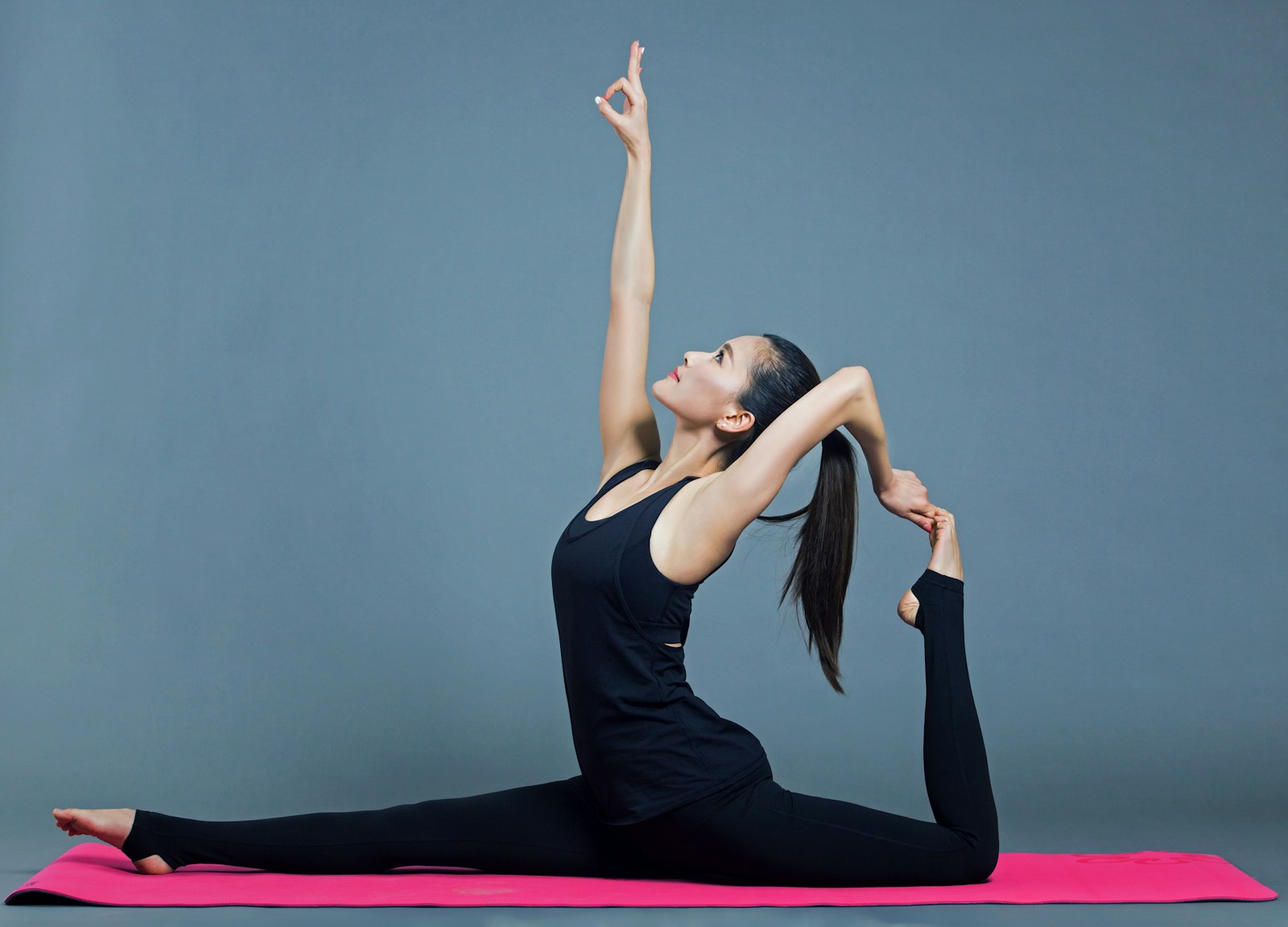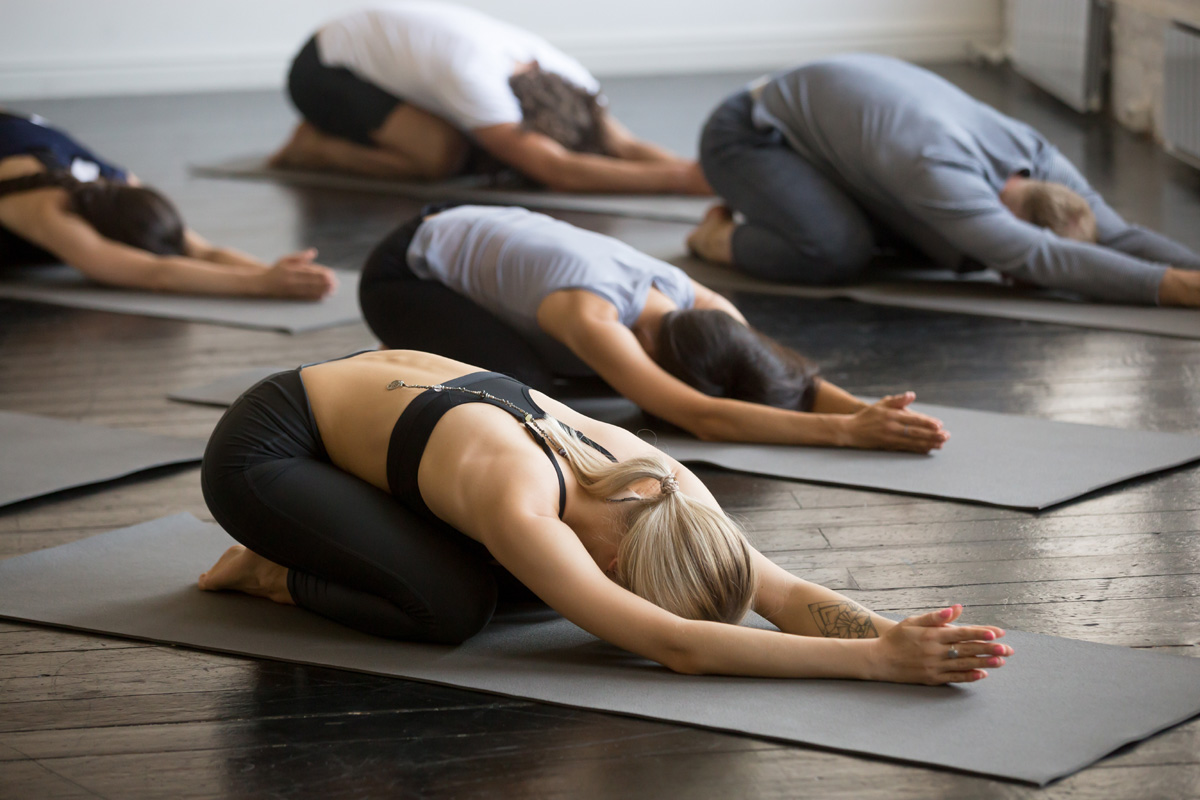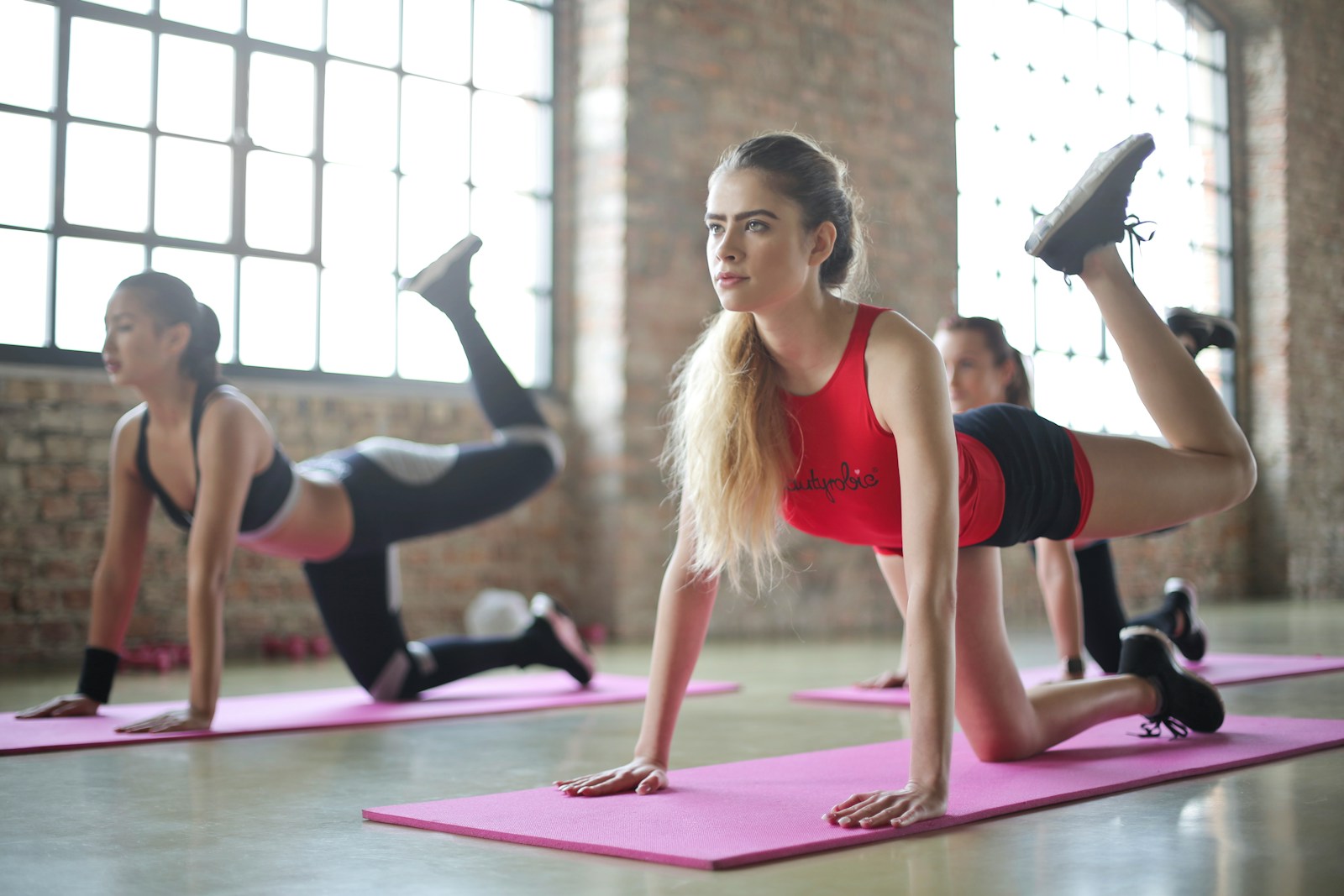Navigating the path to recovery from a herniated disc can be a journey riddled with complexity. The incorporation of gentle, low-impact exercises like yoga and pilates into your recovery regimen could potentially ease discomfort and expedite healing. There is, however, a need to consider the efficacy, the precautions, and the specific poses and movements that are most beneficial. We welcome you to join this professional discussion, where we will provide a comprehensive guide to harnessing these techniques for herniated disc recovery.
Understanding Herniated Discs
A herniated disc, a common yet complex condition of the spinal column, refers to a situation where the tough, outer layer of a spinal disc cracks, leading to the soft, inner material protruding out, often causing immense discomfort and disrupting daily life activities. To fully comprehend this, it is important to understand disc anatomy basics. The spine is composed of a series of connected bones called vertebrae. Between each vertebra, there are discs filled with a jelly-like substance that act as shock absorbers and prevent the bones from rubbing against each other.
Herniation causes can be manifold, ranging from natural degeneration due to aging, sudden physical strain, or injury. Often, the wear and tear of the disc due to aging lead to the outer layer becoming brittle and susceptible to cracks. Equally, lifting heavy objects using back muscles instead of leg muscles can put excessive pressure on the lower back area, causing the disc to herniate. Understanding these causes is the first step towards prevention and management of the condition. Our subsequent sections will explore into effective recovery strategies, ensuring a holistic healing approach.
Benefits of Yoga and Pilates
Yoga and Pilates, when practiced correctly, have been found to greatly enhance flexibility and strength. These disciplines not only facilitate physical healing, but also contribute to mental well-being, creating a holistic approach to managing a herniated disc. In the following discussion, we will explore these benefits in an informed, empathetic, and detailed manner.
Enhancing Flexibility and Strength
By enhancing flexibility and strength, both Pilates and yoga can offer significant benefits for individuals suffering from a herniated disc. The gentle, controlled movements involved in these exercises can improve overall mobility and decrease the intensity of pain experienced. Breathing exercises, a key component of both practices, aid in maintaining focus and ensuring that movements are performed correctly and safely. These exercises also promote better oxygen circulation, critical for disc healing. Posture correction is another major advantage. Proper alignment reduces strain on the spine and eases discomfort. With consistent practice, these disciplines can slowly rebuild the strength and flexibility of back muscles, minimizing the chance of re-injury. Both yoga and Pilates emphasize mindful, deliberate movement, making them ideal for herniated disc recovery.
Mental Well-being Improvement
Beyond their physical benefits, both Pilates and yoga serve as potent tools for mental well-being, offering a sense of calm, clarity, and inner peace that can be particularly beneficial for individuals managing the challenges of a herniated disc. These practices incorporate meditation benefits that extend beyond the mat, fostering mindfulness and deep relaxation that can greatly enhance your quality of life. This state of tranquility can help reduce stress, a key factor that often exacerbates disc-related pain. By nurturing the mind-body connection, Pilates and yoga provide a holistic approach to recovery, promoting not just physical healing, but also emotional resilience. The focus on breath, alignment, and movement creates a nurturing environment that encourages the release of tension, ultimately fostering a greater sense of mental well-being.
Precautions Before Starting
Before starting on a regimen of yoga or pilates to address a herniated disc, it’s important to first take several precautions to guarantee the safety and efficacy of your practice. The initial step should always be a thorough medical consultation. Discussing your condition with a healthcare professional will provide an understanding of your limitations and the suitability of yoga or pilates for your specific circumstances.
Safety measures are vital to prevent exacerbation of your condition. It’s critical to listen to your body and not push beyond your comfort zone. Over-enthusiasm can lead to further injuries, so it’s important to start slow and gradually increase the intensity of your workouts.
Additionally, always make sure that your workout area is safe. Remove any potential hazards that might cause falls or accidents. It is also recommended to have someone nearby during your practice sessions as a precautionary measure. Moreover, wearing appropriate fitness attire can also prevent unnecessary injuries.
It’s essential to learn the correct techniques and postures from a certified instructor. Incorrect practice can potentially worsen your condition. Remember, the aim is gentle recovery, not instant results. Take your time, be patient, and listen to your body’s signals as you journey towards recovery.
Yoga Poses for Relief
In the domain of yoga, certain poses can provide significant relief for those suffering from a herniated disc, offering a demonstration of the therapeutic combination of gentle stretching, strengthening, and relaxation. These poses are part of alternative treatments being explored by people looking to alleviate pain and discomfort associated with this condition.
The ‘Child’s Pose’ is one such pose, offering a gentle stretch to the spine, alleviating pressure on the disc. Similarly, ‘Cat-Cow Pose’ offers therapeutic stretches that flex and extend the spine, promoting mobility and relief. ‘Sphinx Pose’, on the other hand, provides gentle backbend that can help in creating space in the spinal column, facilitating healing.
While these poses are beneficial, it is essential to approach them with caution. Overstretching or incorrect alignment can cause more harm than good. It is recommended to practice under the guidance of a yoga instructor experienced in therapeutic yoga.
These yoga poses are a representation of the potential of non-invasive, alternative treatments in managing the pain and discomfort of a herniated disc. When combined with conventional treatments, yoga can be a powerful tool in the journey towards recovery.
Pilates Exercises for Healing
While yoga poses offer a vital approach to managing herniated disc pain, Pilates exercises also play a significant role in enhancing spinal health and facilitating recovery. Specifically, Pilates targets the core muscles, which aid in stabilizing and supporting the spine. This is particularly beneficial for individuals with a herniated disc, as strengthening these muscles can help alleviate pressure on the affected area.
Pilates equipment use is essential to maximizing the therapeutic benefits of these exercises. For instance, a Pilates Reformer, which is a bed-like frame with a flat platform on it, provides a structured framework for safe motion. The resistance provided by the springs on the Reformer can be adjusted to match the individual’s strength and flexibility, allowing for a controlled and gradual increase in intensity as recovery progresses.
Instructor led sessions are vital during this delicate healing process. Certified Pilates instructors have the expertise to guide individuals through each movement, ensuring correct form and technique to prevent further injury. They can also modify exercises to accommodate individual limitations and needs. Through a combination of careful instruction and appropriate equipment use, Pilates can be a potent tool in the journey towards healing from a herniated disc.
Combining Yoga and Pilates
Integrating yoga and Pilates can yield a multifaceted approach to managing herniated disc symptoms. Together, these two practices offer a spectrum of benefits, from improved flexibility and strength to enhanced body awareness and stress relief. However, it is crucial to tailor exercises to the individual’s condition to guarantee safety and maximize therapeutic effects.
Benefits of Combined Practices
Certainly, the fusion of Yoga and Pilates offers a plethora of benefits, providing a thorough approach to managing herniated disc conditions. This combined practice not only enhances flexibility and strength but also emphasizes injury prevention, critical for those with spine-related ailments. With a focus on core stability, these exercises greatly aid in posture correction, reducing the strain on the disc and mitigating further damage.
The combined practice allows for a holistic recovery, addressing physical discomfort while promoting mental resilience. It provides a gentle, yet effective rehabilitation path, fostering patience and persistence. Through the dual practice of Yoga and Pilates, individuals can navigate their journey to recovery with more confidence, offering a safe and sustainable way to manage and improve herniated disc conditions.
Tailoring Exercises for Herniation
Though the fusion of Yoga and Pilates offers extensive advantages, it’s imperative to carefully select and modify exercises to address the specific needs of individuals suffering from herniated disc conditions. Several factors influence the development of a tailored exercise regimen:
- Understanding Herniation risk factors: Overweight, occupation, genetics could increase the risk. Realizing these factors can help modify exercises to alleviate strain on the back.
- Incorporating Posture correction: Correct posture is essential in preventing further disc damage. Exercises should focus on strengthening core and back muscles to support a straight spine.
- Prioritizing gentle movement: Avoiding high-impact and strenuous activities is essential. Gentle movements help to increase flexibility and reduce discomfort.
Adapting Poses for Comfort
Many individuals with a herniated disc may find traditional yoga and Pilates poses challenging; however, with mindful adaptations, these poses can be modified for comfort and safety, facilitating a beneficial and therapeutic experience. This is where the concepts of injury prevention and posture correction come into play, transforming the way these exercises are approached.
Focusing on vital prevention, it’s essential to listen to your body. If a pose causes pain or discomfort, it’s a signal to adjust or even avoid that pose. A well-trained instructor can guide you to safely adapt the pose to your body’s current capacity. Remember, the goal is therapeutic movement, not pain.
Posture correction, on the other hand, is an integral part of both yoga and Pilates. Correct alignment protects the spine and helps distribute weight evenly across the body. This can be achieved by using props like blocks or straps to modify poses, making them more accessible and comfortable. For instance, a block can help bring the floor closer in forward folds, relieving pressure on the lower back.
Core Strengthening Techniques
Core strengthening techniques are fundamental for those dealing with a herniated disc, as they can provide essential support to the spine. As we turn our attention to this topic, we will explore the definition of core strengthening and the specific techniques that are beneficial for individuals with a herniated disc. Moreover, we will compare the advantages of Pilates and Yoga, granting a thorough understanding of their impact on this condition.
Understanding Core Strengthening
In the domain of physical therapy and fitness, core strengthening represents a fundamental aspect, entailing the development and conditioning of the muscles around the abdomen, back, and pelvis to support the spine and body. Core alignment principles and abdominal bracing techniques form the bedrock of this process.
- Core alignment principles: These aim to achieve best posture while exercising, which reduces strain on the spine and muscles. It involves maintaining a neutral pelvis and spine during core exercises.
- Abdominal bracing techniques: This refers to the activation of deep core muscles to create a natural ‘brace’ or support for the spine. It is essential for proper load distribution during movement.
- Progressive overload: This involves gradually increasing exercise intensity to build strength without risking injury.
Understanding these techniques is a stepping stone to safe and effective core strengthening.
Techniques for Herniated Disc
How can we harness the power of core strengthening techniques to alleviate the discomfort caused by a herniated disc, you might wonder? Once your disc herniation diagnosis is confirmed, it’s important to ponder non-surgical treatments that focus on core strengthening. This approach reinforces the muscles supporting your spine, which can minimize pressure on the affected disc. Techniques such as Pilates and yoga are beneficial, as they promote flexibility, balance and core strength. They incorporate controlled movements that can be tailored to your ability and pain levels. These exercises can gently stretch your lower back and neck, providing relief from discomfort. However, any new exercise regimen should be undertaken with a healthcare professional’s guidance to guarantee the safety and effectiveness of the techniques used.
Pilates Vs Yoga Benefits
While both Pilates and yoga offer significant benefits for strengthening the core and relieving pain from a herniated disc, their unique approaches target different aspects of physical well-being.
- Pilates equipment usage: Pilates often incorporates specialized equipment, like a reformer, to provide resistance training, enhancing core strength and stability. This can be particularly beneficial for individuals recovering from a herniated disc, as a strong core can reduce the strain on the back.
- Yoga origin exploration: Originating from ancient Indian practices, yoga emphasizes the integration of mind, body, and spirit. It offers gentle stretching and relaxation techniques, which can alleviate herniated disc discomfort while promoting overall wellness.
- Both methods: While Pilates focuses more on core strength and spinal alignment, yoga can improve flexibility and reduce stress, providing a thorough approach to healing and recovery.
Monitoring Your Progress
Are you keeping track of your progress with yoga and Pilates for your herniated disc? If not, it’s time to contemplate Progress Journaling, a thorough tool to monitor your recovery journey. This not only helps you chart your improvement, but also allows you to understand your body’s response to different exercises, highlighting areas that need more focus or caution.
In your Progress Journal, record each session’s details including the poses or movements attempted, the duration, difficulty level, and any sensations or discomfort experienced. Over time, these records will provide a clear picture of your improvement, helping you identify your Recovery Milestones. These milestones can be anything from managing a new pose without pain to noticing a decrease in your overall discomfort levels.
Maintaining Spinal Health
Beyond tracking your recovery, it is equally imperative to maintain long-term spinal health to prevent further injury to your herniated disc, thereby improving your overall quality of life. This includes maintaining good posture, regular physical activity, and ensuring prime spinal nutrition.
Maintaining spinal health involves a holistic approach that not only focuses on physical activity but also lifestyle modifications. Here are three important practices:
- Spinal Nutrition: A balanced diet rich in calcium and vitamin D is essential for maintaining bone health. Proper hydration is also key to maintaining the elasticity and flexibility of the spine.
- Posture Correction: Maintaining good posture, whether sitting or standing, is crucial in preventing undue stress on your spine. Consider ergonomic furniture and be mindful of your posture when lifting weights.
- Regular Exercise: Incorporate exercises like Yoga and Pilates that strengthen your core, thereby providing better support to your spine.
Success Stories and Testimonials
Numerous individuals have experienced significant relief from herniated disc pain and enhanced spinal health through the incorporation of Yoga and Pilates into their wellness routines, as evidenced by their compelling success stories and testimonials.
One such account is that of a middle-aged woman named Sarah. After suffering from chronic back pain due to a herniated disc, she found solace in a combination of Yoga and Pilates. Sarah’s personal experience demonstrates the transformative power of these exercises, detailing how they helped her regain strength, flexibility, and ultimately, a pain-free life.
Another inspirational testimonial comes from Mike, a former athlete whose sports career was abruptly halted by a herniated disc injury. His recovery journey was marked by frustration and despair until he discovered the benefits of Yoga and Pilates. Mike found that these exercises not only alleviated his pain but also improved his posture and core strength, enabling him to return to active sports.
These stories underscore the therapeutic value of Yoga and Pilates for herniated disc patients. As more people share their experiences, the growing body of evidence underscores the potential of these gentle exercises in facilitating herniated disc recovery.
Frequently Asked Questions
What Are the Differences Between Yoga and Pilates in Terms of Recovery From a Herniated Disc?
Yoga emphasizes flexibility and balance, often incorporating disc-specific exercises for a gentle recovery from a herniated disc. Pilates, on the other hand, focuses on core strength, using specialized equipment for targeted rehabilitation.
How Long Does It Typically Take to Experience Relief From Herniated Disc Symptoms Through Yoga and Pilates?
The duration of relief from herniated disc symptoms using disc specific exercises like yoga and pilates varies. However, with regular practice and proper pain management techniques, improvements are generally noticed within 1-3 months.
Are There Any Specific Dietary or Lifestyle Changes to Complement Yoga and Pilates for Herniated Disc Recovery?
Incorporating supplemental therapies like acupuncture, chiropractic care, and massage can enhance recovery. Additionally, adopting pain management techniques and maintaining a balanced diet high in anti-inflammatory foods may aid in herniated disc recovery.
Can Yoga and Pilates Help Prevent Future Spine Issues After Recovery From a Herniated Disc?
Yes, regular practice of yoga and pilates can help prevent future spine issues. Both incorporate disc strengthening techniques and emphasize prevention through posture, promoting spinal health after recovery from a herniated disc.
Are There Any Online Resources or Classes You Recommend for Practicing Yoga and Pilates for Herniated Disc Recovery at Home?
Selecting a qualified online instructor is essential for effective herniated disc recovery. Websites like Yoga International and Pilates Anytime offer specialized classes. Remember to have a yoga mat, straps, and a Pilates ball for equipment.



